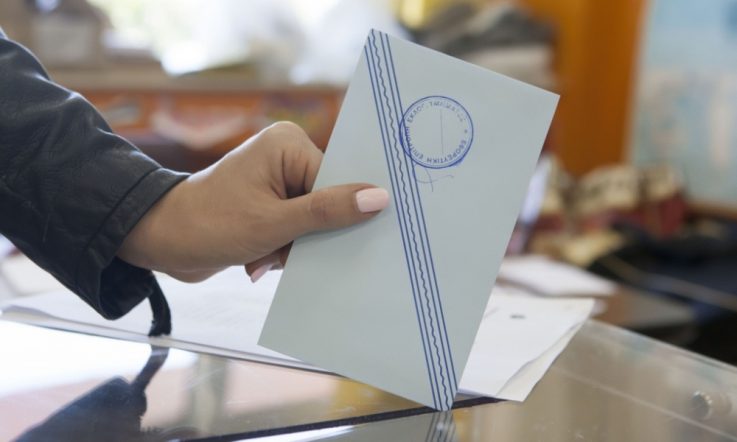In my teaching life, I have been fortunate enough to witness real student change. The kind of change that excites and inspires.
Some time ago, I had cause to reflect on these transformational moments and noticed a trend.
What was it that took Nathan from being 17 and barely literate to being the author of a chapter in a published book? What was it that saw Ellie, who once proudly declared that she ‘hated school', seek work experience as a teacher's aide? What gave Paolo, normally riddled with anxiety at the mere thought of public speaking, the courage to run a series of workshops for 30 strangers?
In each of these situations, the common element was service. These students were in a situation where they needed to look outwards, to recognise the needs of another, and to respond. And in these moments they were deeply changed.
But anecdotal experience and heart-warming stories were not quite enough. Thus, as part of my Master of Teaching, I set out to research student involvement in service activities. What forms does it take? What measureable outcomes are achieved? How can it fit into our current school systems? What makes it a success?
In the process, I have become convinced that schools ought to make service learning (both within and alongside the curriculum) a priority.
Too often service is given a polite pat on the back for being ‘nice' while simultaneously being positioned somewhere to the left of the ‘serious business of education'. But both research and practice tell a different story. The case for student involvement in service is multi-faceted, rigorous and compelling.
Let me draw out just five key points from research and policy that may help the discussion evolve.
The current governmental mandate and the shifting role of schools reflect the need for students to be engaged in the community
Key policy documents (such as the Australian Curriculum and the Melbourne Declaration), call schools to equip students to become ‘active and informed citizens' who commit to ‘national values of democracy, equity and justice', ‘participate in Australia's civic life', ‘work for the common good', ‘behave with ethical integrity' and ‘act with responsibility at a local, regional and global level'.
In addition, the popular understanding of the role of the school is shifting. As Rosalyn Black points out: ‘Australian policy trajectories … are increasingly reframing the function of schools from educational facilities for young people to points of delivery for integrated education and community services,' (Black, as cited in Bottrell and Goodwin, 2011).
Service learning is a means by which schools can put this contemporary understanding of education into practice in a way that is meaningful for students and the community.
Service programs are a key means by which schools can make their vision a reality
Active, self-motivated, socially-responsible citizens are framed very positively in public discourse.
Unsurprisingly, schools are committed to this vision too. As you drive around your local area, take note of the various school mottos and vision statements you can see. They paint the picture of students who are ethical, compassionate, globally-responsible, empowered, engaged, inclusive, and just.
The role of traditional classroom learning in developing these skills and dispositions is not to be dismissed but the case for experiential, other-person-centred learning experiences is very strong. One of the most common reflections in the literature is that students feel that their ‘world was broadened' through participation in service activities (Conrad and Hedin, 1991). Furthermore, experts have shown that increased empathy, an appreciation of diversity, and sustained intentions to help others are common markers of involvement in service programs.
Service can counter the trends of growing disengagement and tap into intrinsic motivators
The picture of the ‘apathetic teen', eyes fixated on a screen, unaware of and unmoved by social concerns and disconnected from their immediate community is becoming something of a modern archetype. But is it realistic?
Here, findings are mixed. Some experts speak of the ‘crisis' of growing disengagement, while others acknowledge that volunteering amongst young people is on the rise and that the moment students are given voice and ownership, their engagement sky-rockets.
Service activities are uniquely positioned to appeal to intrinsic motivators. Students are driven by a desire to belong, to be meaningfully stimulated, to develop self-efficacy and to experience integrity. The potential for service activities to facilitate growth in these areas, and to combat the dangers of disengagement, is enormous.
The learning outcomes of service involvement are significant and transformative
Research suggests that service programs are effective in building interpersonal and communication skills, problem-solving abilities, complex thought processes, collaborative skills, ethical reasoning, and social and political understanding.
Service activities often challenge students and, provided they are not overwhelming, these challenges render such activities both intellectually and emotionally engaging.
When compared to traditional classroom learning, service learning does not fall short. If anything, it shines. In a survey of 4000 students (all of whom were involved in service programs) 75 per cent reported learning ‘more' or ‘much more' through their service than through their normal classes (Conrad and Hedlin, 1991).
Furthermore, recent educational research is singing the praises of allowing students to work for ‘real audiences'. Service activities are a wonderful expression of this. Generally, service is performed both with and for other people, and in this way it fuels learning and develops a student's sense of educational competence.
The experiential component and the sense of having applied content and skills in a real-world environment for real-world benefits, lead to tangible improvements in student outcomes as well as increased motivation to learn.
In the face of a youth mental health epidemic, service involvement could be a powerful preventative strategy
Numerous studies have recorded increases in personal happiness, life-satisfaction, hopefulness, open-mindedness, self-esteem and connectedness as a result of involvement in service activities. Key elements of service programs (such as positive relationships with adults, opportunities to develop social competence, and involvement in a local community) are cited as powerful protective factors for young people and recent Australian studies have demonstrated a correlation between service activity and reduced rates of depression, isolation, mental disorders, psychological stress and (in some cases) even physical health conditions (Berry, 2007).
For schools facing the terrifying trends in youth mental health, this research provides great hope.
Consider this discussion an entrée, a brief insight into the literature on service learning that is meant to simply whet the appetite. There is little debate about whether service is a good thing – I'm sure we all agree that it is – but could it also be a core thing? An approach to life and learning that is prioritised in schools for the benefit and transformation of, not only our students, but society as a whole?
References
Berry, H.L. (2007). Preliminary development and validation of an Australian community participation questionnaire: Types of participation and associations with distress in a coastal community. Social Science and Medicine, 64, pp. 1719-1737.
Bottrell, D., and Goodwin, S. (2011). Schools, Communities and Social Inclusion (Eds). Victoria: Palgrave Macmillan.
Conrad, D., and Hedin, D. (1991). School-based community service: What we know from research and theory. Phi Delta Kappan, June, pp. 743-749.
Do students have the opportunity to get involved in service programs at your school?
How often are your students able to apply their knowledge to a real-world setting?



